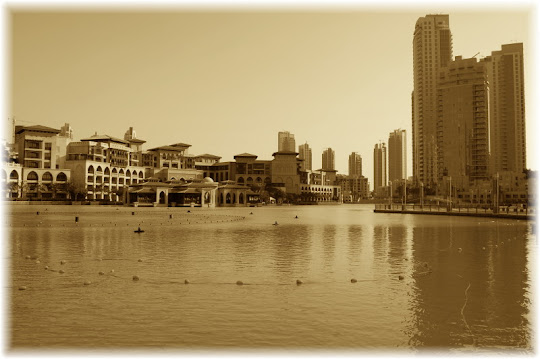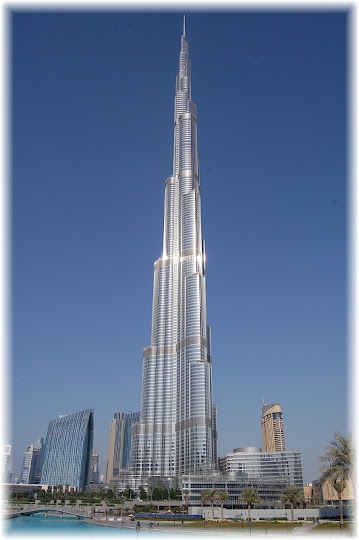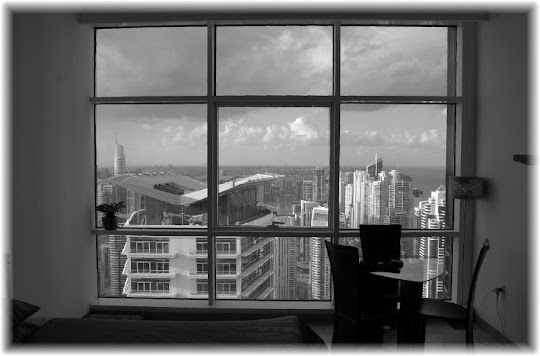
Some people wonder what's up in Dubai today. How has it been affected by the world economic crisis?
The short answer is that Dubai has weathered the storm, and continues to do so--this storm yet to complete its run.
Construction Impact
The effect of the economic crisis in Dubai has largely been a factor of the collapse in construction activity. As recently as the year 2000, Dubai's economy was built up on trade and its burgeoning tourism and retail sectors. No doubt trade was king. Then, in an effort to diversify the economy, the government decided to create a real estate market, allowing anyone from anywhere to own property. Prior to this, even UAE nationals could not buy property, but were granted plots and homes by the country's rulers. In fiefdom style, the country's real estate had belonged exclusively to its ruling clans.
In 2002, Dubai announced the opening of its property market and thereby initiated a process of diversification that was so successful that within just a few years the economy was transformed from being trade based to real estate and construction. Tourism and retail were riding close on the heels of the construction boom, while trade remained important but with a dwindling share of total economic activity.

Dubai in 2000 was a city that straddled a natural salt-water inlet (the Creek) with two major ports, a busy airport and two CBDs (central business districts)--an old style one on one side of the Creek and a complimentary newer one on the opposite bank. Removed, as though out toward a hinterland, was a new row of high-rise towers, a couple of iconic hotel resorts and the city's free trade zone and principal port in Jebel Ali.
New Dubai
That was Dubai in 2002, when property ownership was first made open to all who could afford to buy. By 2008, Dubai was transformed into a megatropolis--into a sort of hybrid of Chicago and Los Angeles. The city had sprouted residential and business districts of dozens and even hundreds of high-rise towers, new expressways with countless fly-overs and tunneled interchanges, major bridges, and a 60 km metro line. Its once busy airport was transformed into one of the largest, most modern air terminals in the world and the sky had literally become the limit of what Dubai had still on its plate. Only six short years had separated a modest, somewhat traditional trading hub from a mega-city, on the cutting edge of 21st century architecture and urban development.

2008
Dubai reluctantly acknowledged the new economic crisis. By the end of 2008, however, it had become clear that business-as-usual was an ineffectual strategy. In October 2008, nearly two-months past the Wall Street earthquake, one of Dubai's premier government real estate entities announced with great fanfare the launch of its latest tallest in the world building, this time surpassing 200 floors and accompanied with its own manmade harbor and mini-city. Although a build it and they will come strategy could no longer be relied upon, the powers that be still had faith in the idea that business success was more than anything a product of the confidence game. Remain confident and defiant in the face of adversity and the tide will move your way.
Nakheel, the fumbling builder of Dubai's iconic Jumeirah and Jebel Ali Palm islands, would build its iconic, 200-story plus Nakheel Harbor and Tower, the world economic crises be damned.
That strategy didn't work.
Dubai Today
Two years hence and on the cusp of a new year, Dubai is still alive and kicking. The construction industry has collapsed but building on a modest scale--and in deed a normal scale--continues. Having built 400-500 medium to super-tall high rise towers and thousands of housing units in a span of 4-6 years, Dubai must resign itself to proceeding with less than half that in the works rather than a doubling or tripling of that number, as was envisioned pre-bust.
 The world's newest tallest building, at 163-floors and 828 meters, far taller than its nearest competitor, was announced open for business on 4 January 2010. It had to, however, endure a humbling change of name from Dubai Tower (Burj Dubai) to Khalifa Tower (Burj Khalifa)--no doubt the price to be paid for a bailout by the ruler of Abu Dhabi. The city's modern, driverless metro network was dedicated on schedule in 2009 albeit an anticipated two-years short of completion. The boom has left in its wake a modern, expansive and efficient road network and other major infrastructure accomplishments.
The world's newest tallest building, at 163-floors and 828 meters, far taller than its nearest competitor, was announced open for business on 4 January 2010. It had to, however, endure a humbling change of name from Dubai Tower (Burj Dubai) to Khalifa Tower (Burj Khalifa)--no doubt the price to be paid for a bailout by the ruler of Abu Dhabi. The city's modern, driverless metro network was dedicated on schedule in 2009 albeit an anticipated two-years short of completion. The boom has left in its wake a modern, expansive and efficient road network and other major infrastructure accomplishments.My rough guesstimate is that just under half of those projects already underway are still moving toward completion albeit at a slower pace. Among these are three 100-story plus towers in various stages of construction in the Dubai Marina district. Those projects which had yet to rise above ground are the ones most severely impacted with very few of these proceeding. Ditto for the roadworks, a new airport and other major infrastructure projects. Emblematic of this is an ambitions luxury tram line which has stalled, with viaducts and turned up roadsides left in limbo given a new, much delayed 2014 completion date, and for a rail line half of what was originally planned.
With its construction and real estate industry bludgeoned Dubai has had to fall back on its more traditional strong horse of trade, with tourism and retail continuing to pick up some of the remaining slack. Dubai had become a boom town, but post bust it still has a few laurels to rest on. Dubai is simply having to revert to a modest development pace--of course, a bit hard to do after its dizzying climb toward the heavens.
A Personal View

I remain optimistic. Dubai has not fallen. And those who withstand a trauma often come out of it stronger than they otherwise would have been. The UAE's seven mini-states, Dubai among them, were traditionally little more than tribal fiefdoms. Dubai has managed to transform itself into a modern economic entity which is still evolving and learning the ropes politically, socially and culturally. In less than a decade Dubai emerged bigger and better than most municipalities do in a century. What Dubai has already become is nothing short of amazing.
| I remain bullish on Dubai! |  |